Perched high above the red-roofed tapestry of Vila Franca do Campo, the Santuário de Nossa Senhora da Paz is more than a landmark—it is a sculptural ascent, a luminous emblem of faith and resilience, and, in our eyes, the most elegant church on the island of São Miguel.
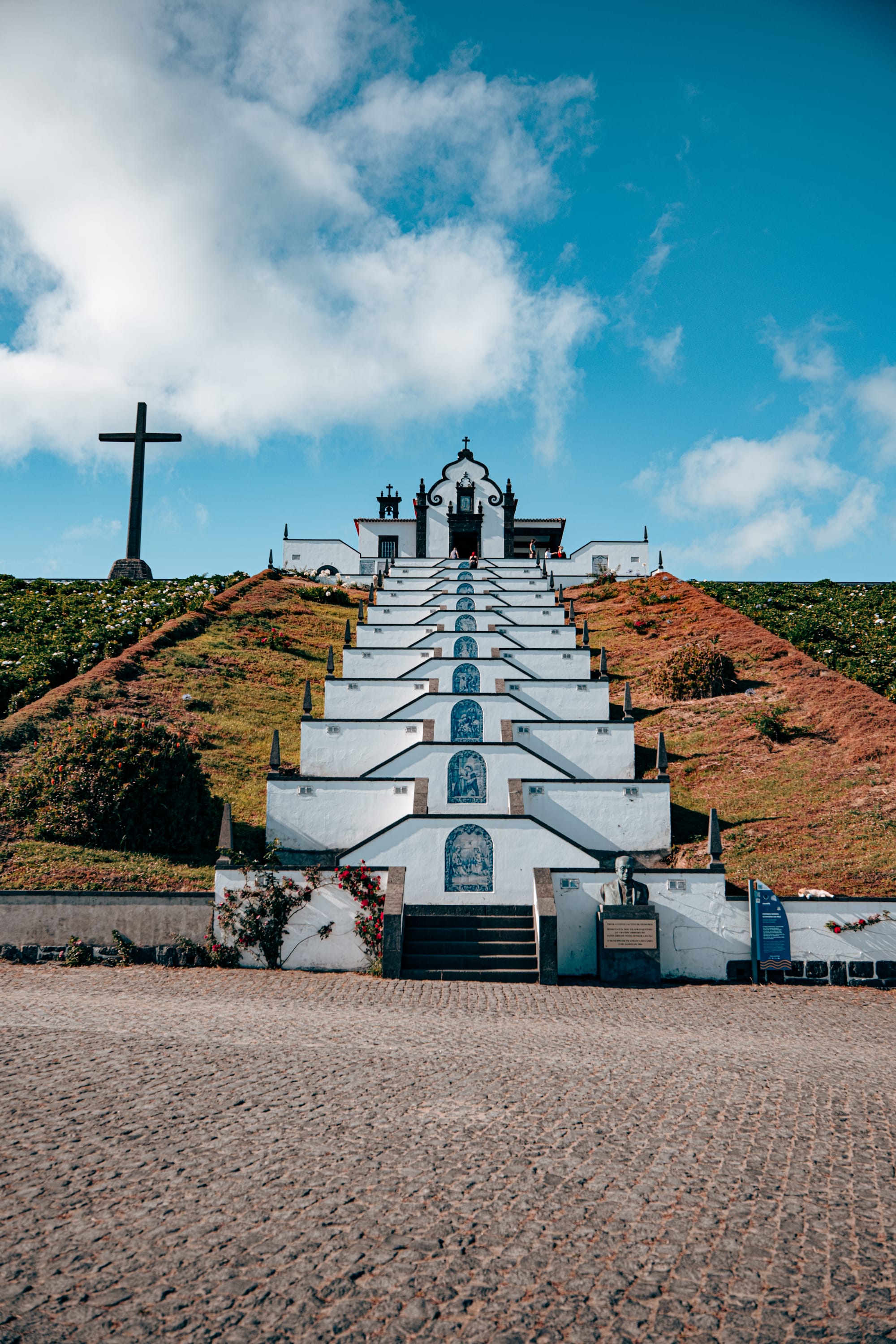
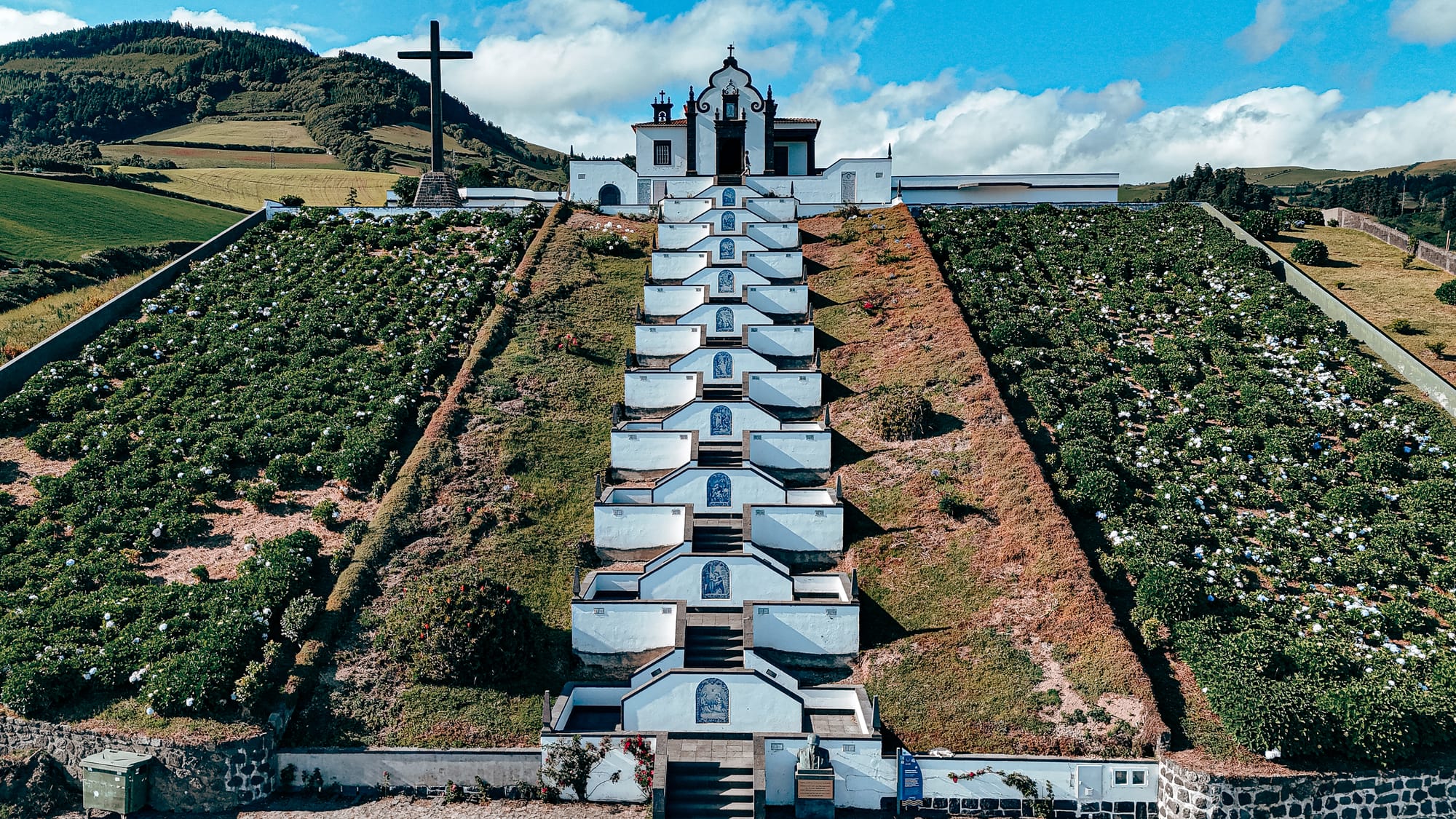
The staircase to Santuário de Nossa Senhora da Paz rises like a vision—each step a prayer, each tile a story
Whether glimpsed from the town below or approached through its lush hillside flank, the sanctuary's architectural clarity and commanding view mark it as one of the most uniquely poetic structures in the Azores.
A sanctuary born of protection
History tethers this hilltop church to moments of divine intercession and local devotion. According to local lore, the sanctuary was first constructed in the 16th century after a miraculous appearance of the Virgin Mary saved a shepherd from Moorish pirates. The image of peace, Nossa Senhora da Paz, is said to have been found atop this very hill. Out of reverence, the townspeople built a small chapel on the site—a gesture of gratitude and sanctuary.
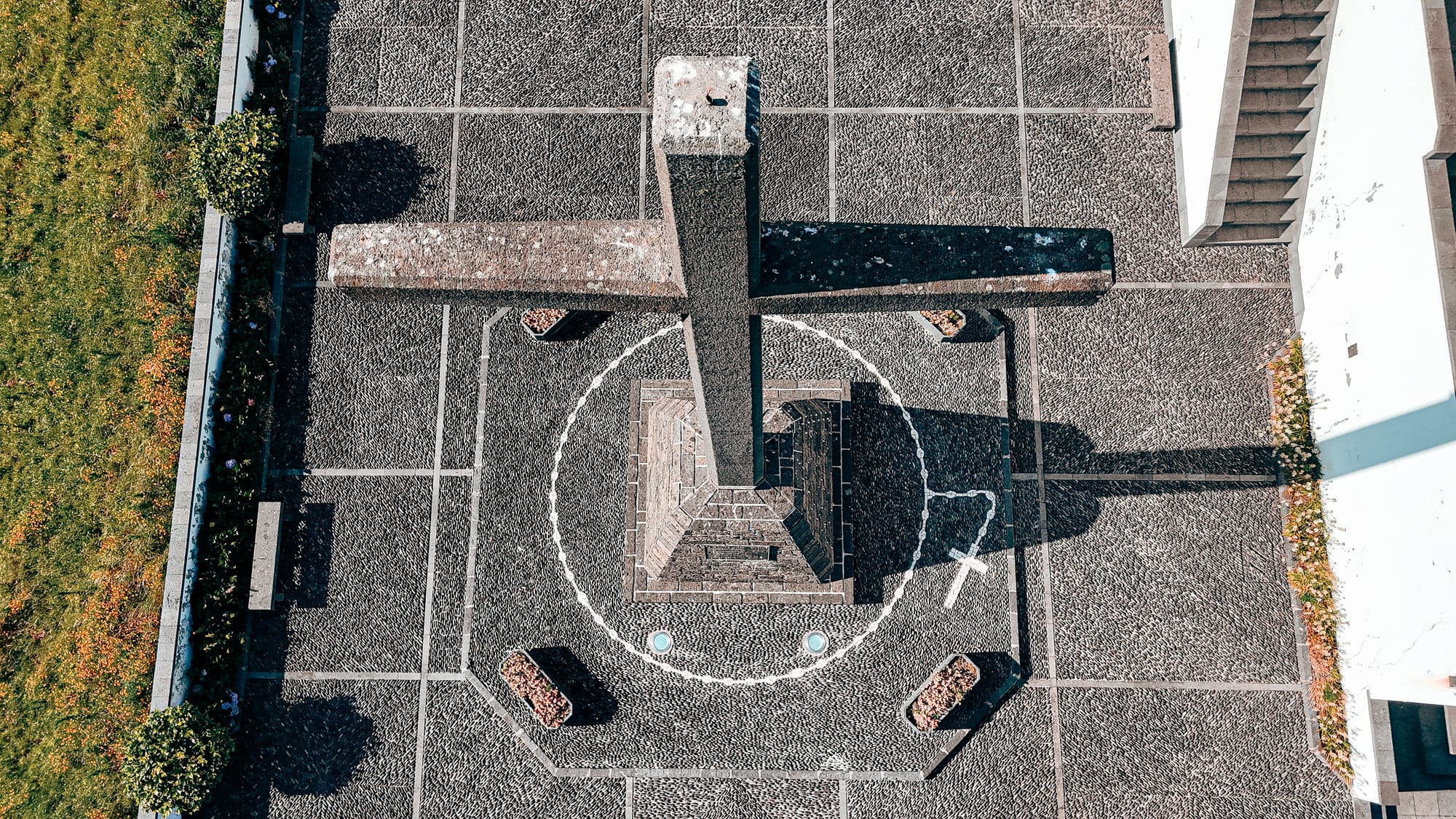
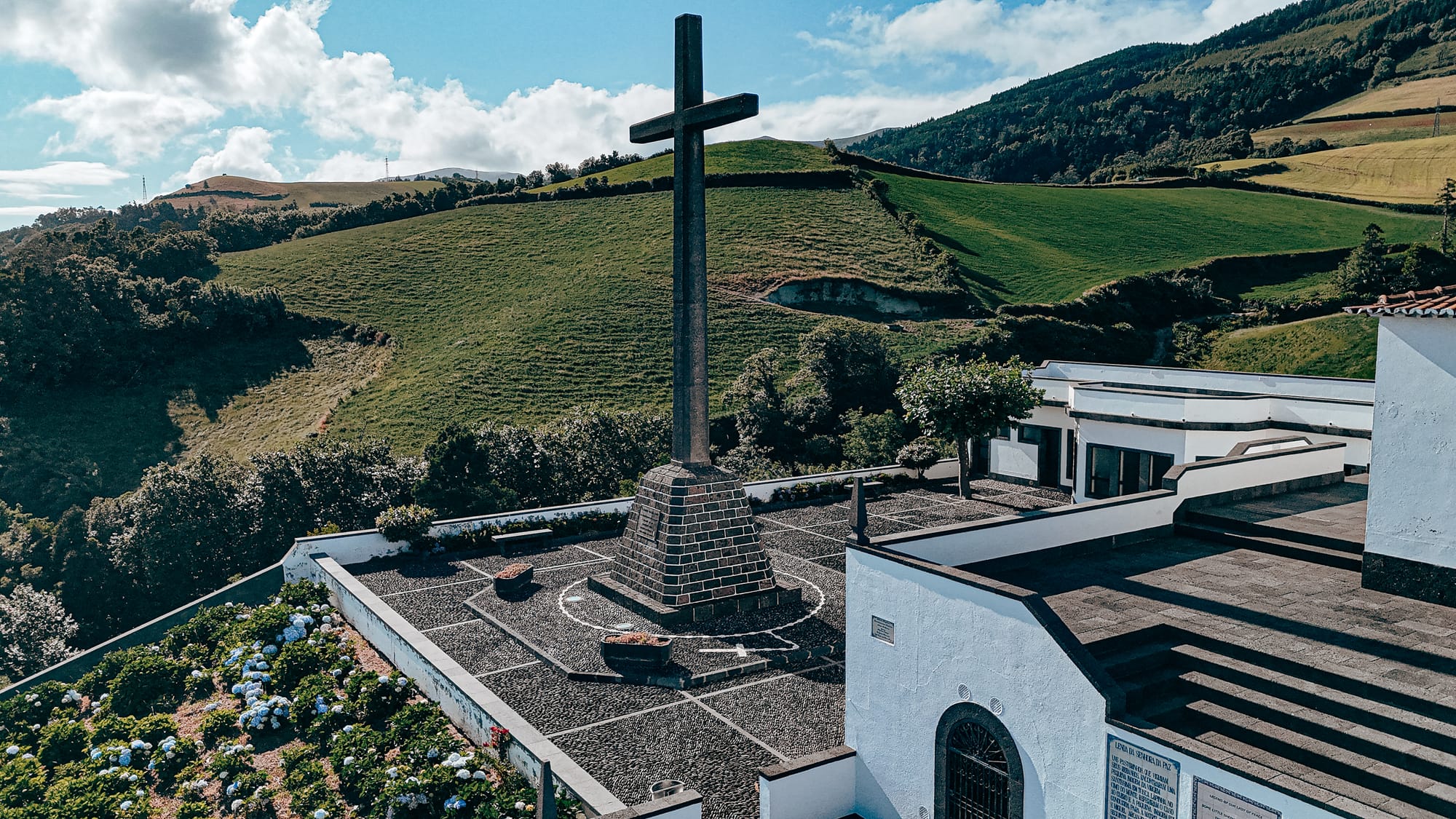
A striking cross casts its long shadow over the basalt-tiled forecourt of the sanctuary
The original structure was destroyed during pirate incursions, but the chapel was faithfully reconstructed in 1764. It has since become a cherished site of pilgrimage, especially during the Feast of Nossa Senhora da Paz in July, when the church comes alive with processions, prayer, and music.
Climbing the heavens, one step at a time
Perhaps the most striking feature of the sanctuary is the staircase that ribbons up the hill, zigzagging its way toward the church like a metaphysical ladder. This isn't just a path of ascent; it's a devotional journey. There are ten levels of steps, each containing a small landing with hand-painted azulejo tiles depicting scenes from the life of Christ and the Virgin Mary. The symmetrical stone balustrades guide you upward, bordered by blooming hydrangeas and manicured hedgerows.
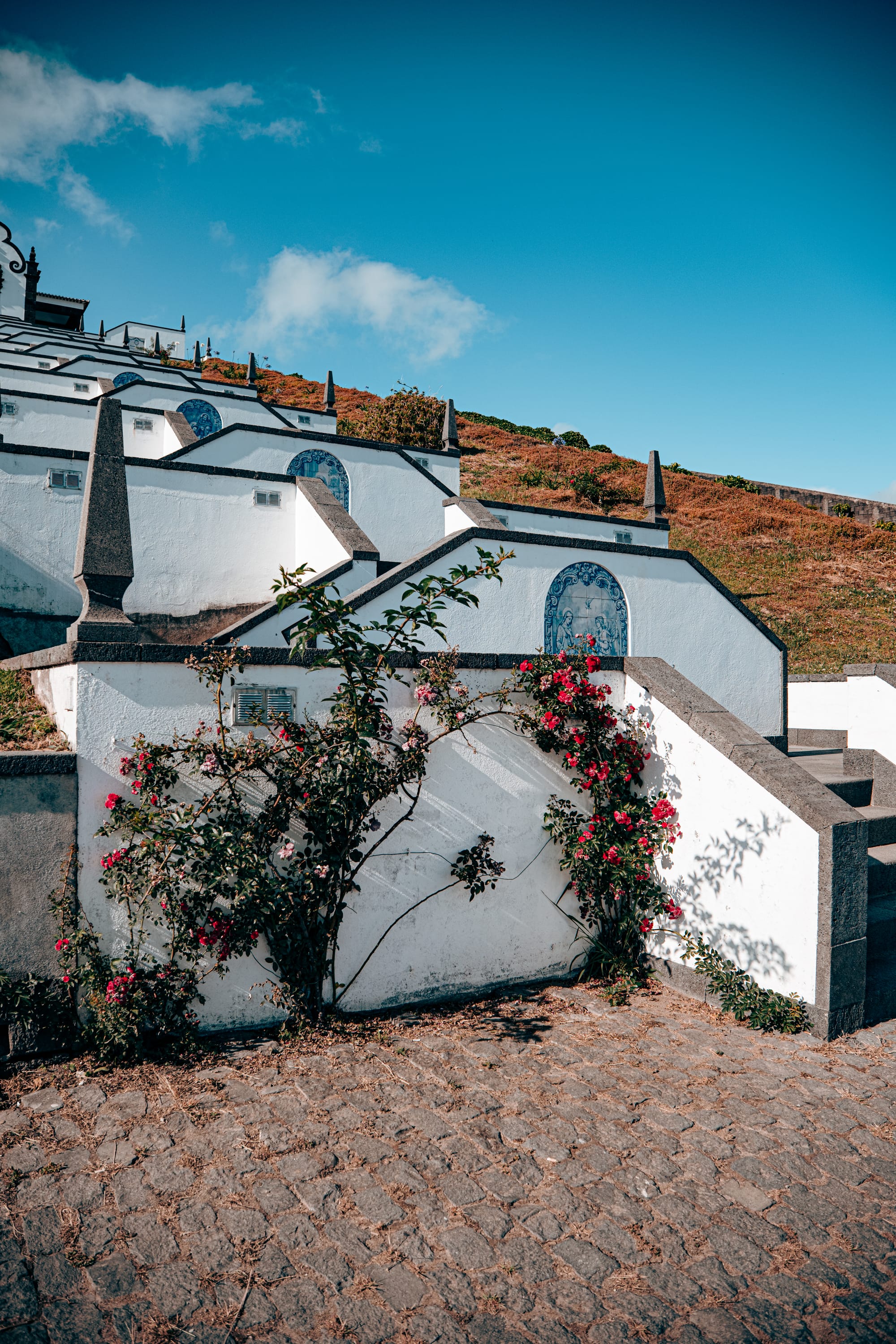
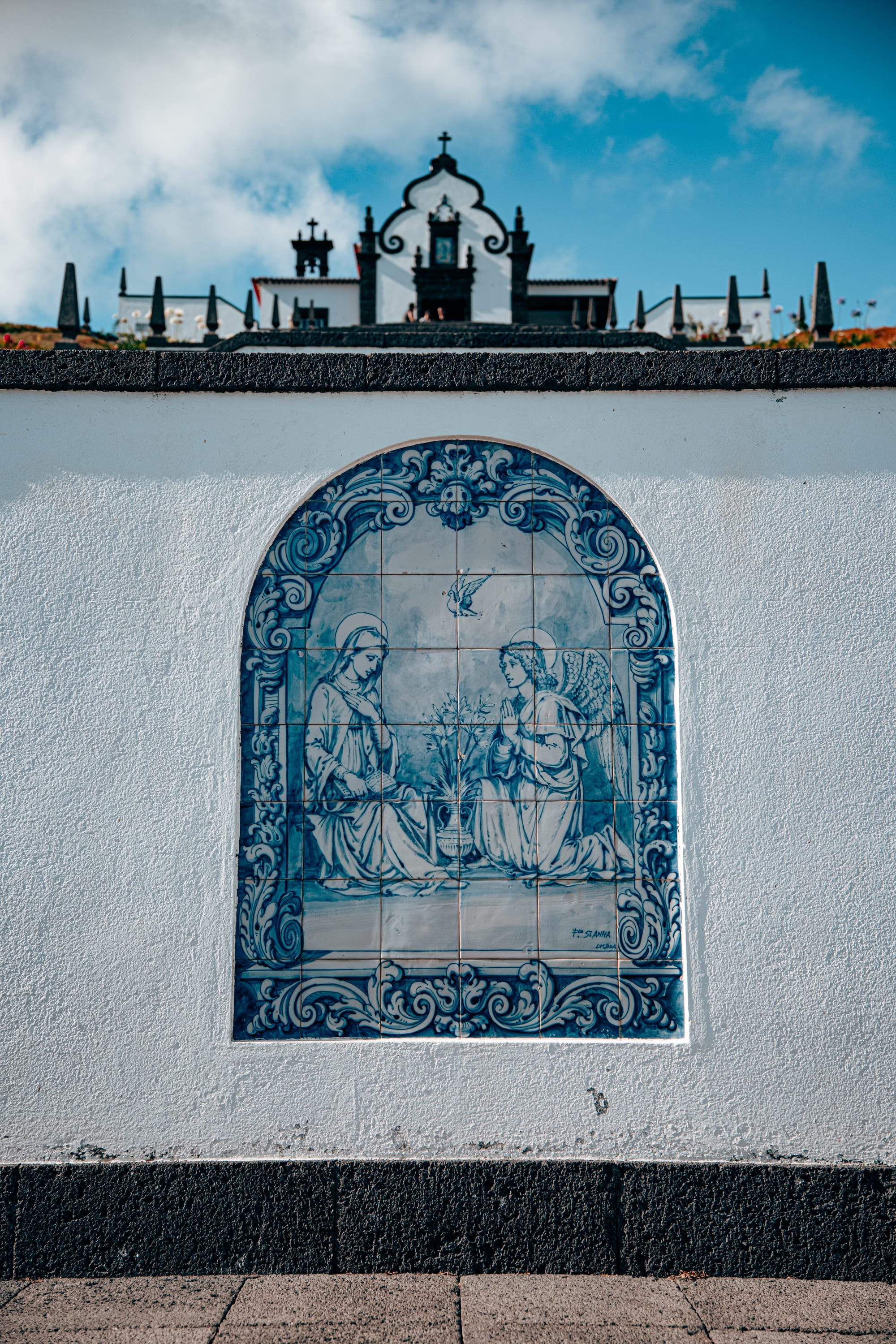
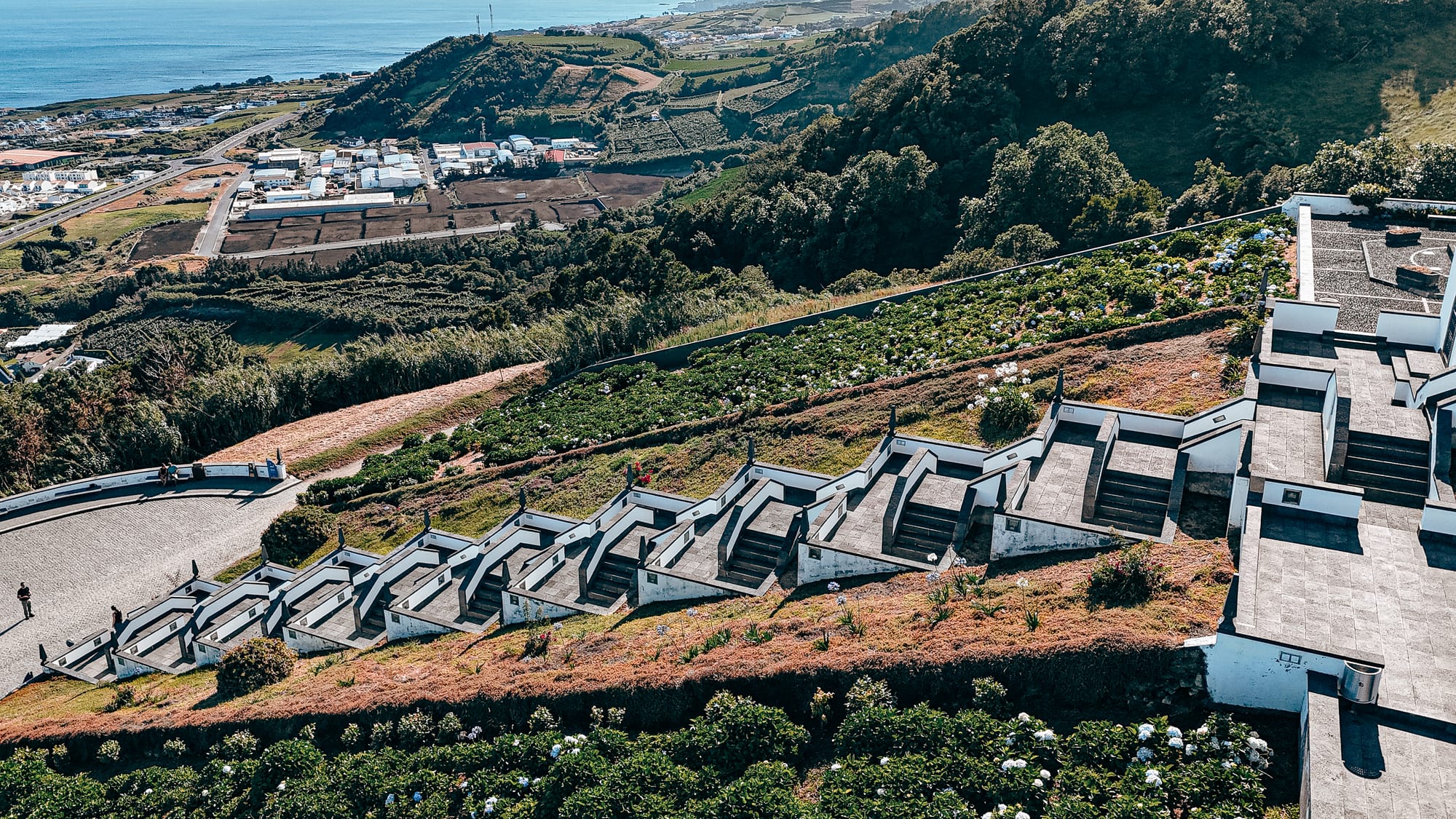
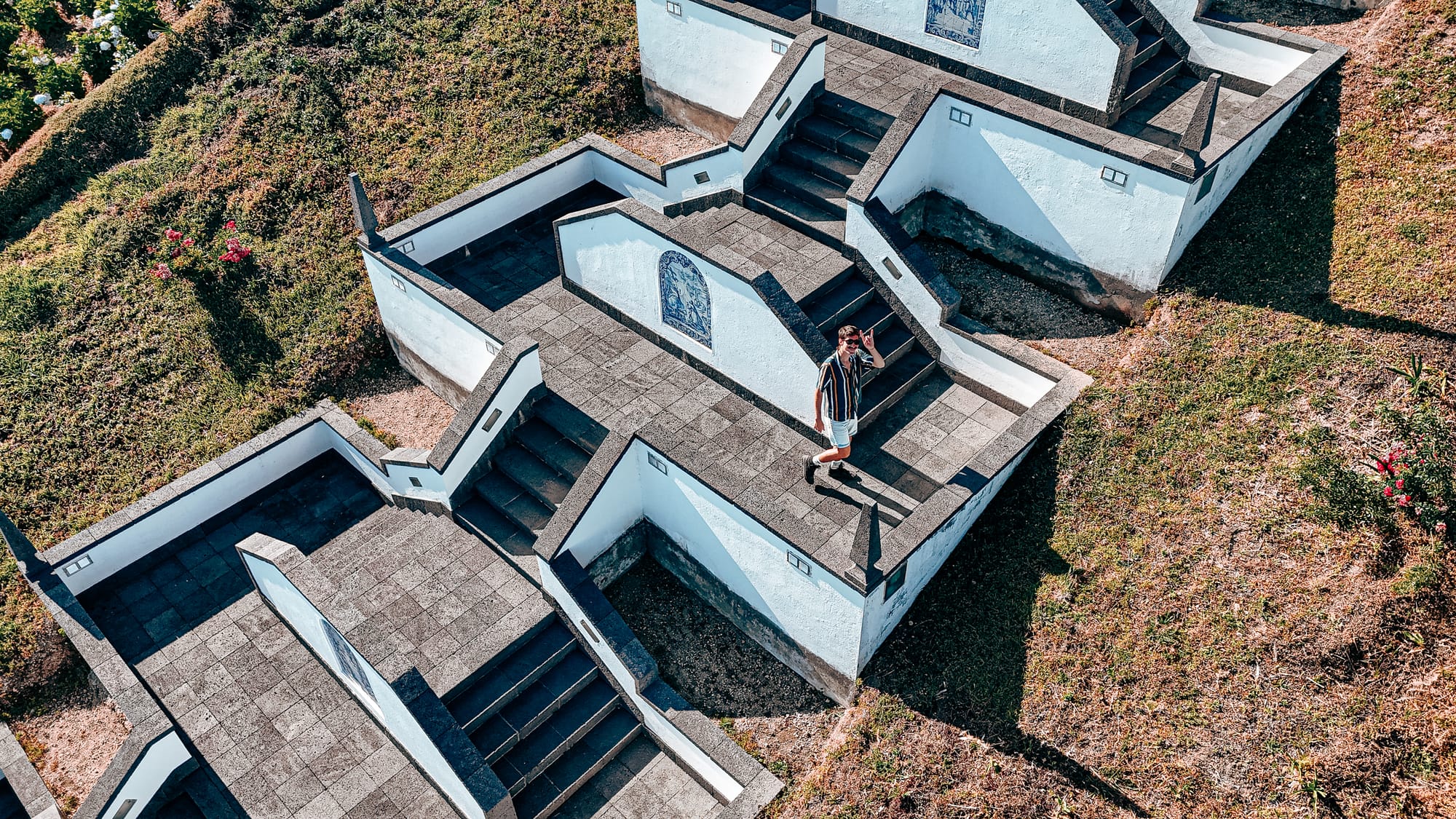
The dramatic zigzagging staircase to Santuário de Nossa Senhora da Paz, each landing marked by hand-painted blue tile panels
Seen from above, the staircase forms a visually satisfying geometric harmony. Its layout is both spiritual and cinematic: the kind of sacred space that moves with rhythm and air. This is not accidental. The tradition of placing churches on high ground is steeped in symbolism. The elevation represents both a literal and spiritual closeness to the heavens. Here, it also offers sanctuary from storm surge and siege—a shelter from both human and elemental threats.
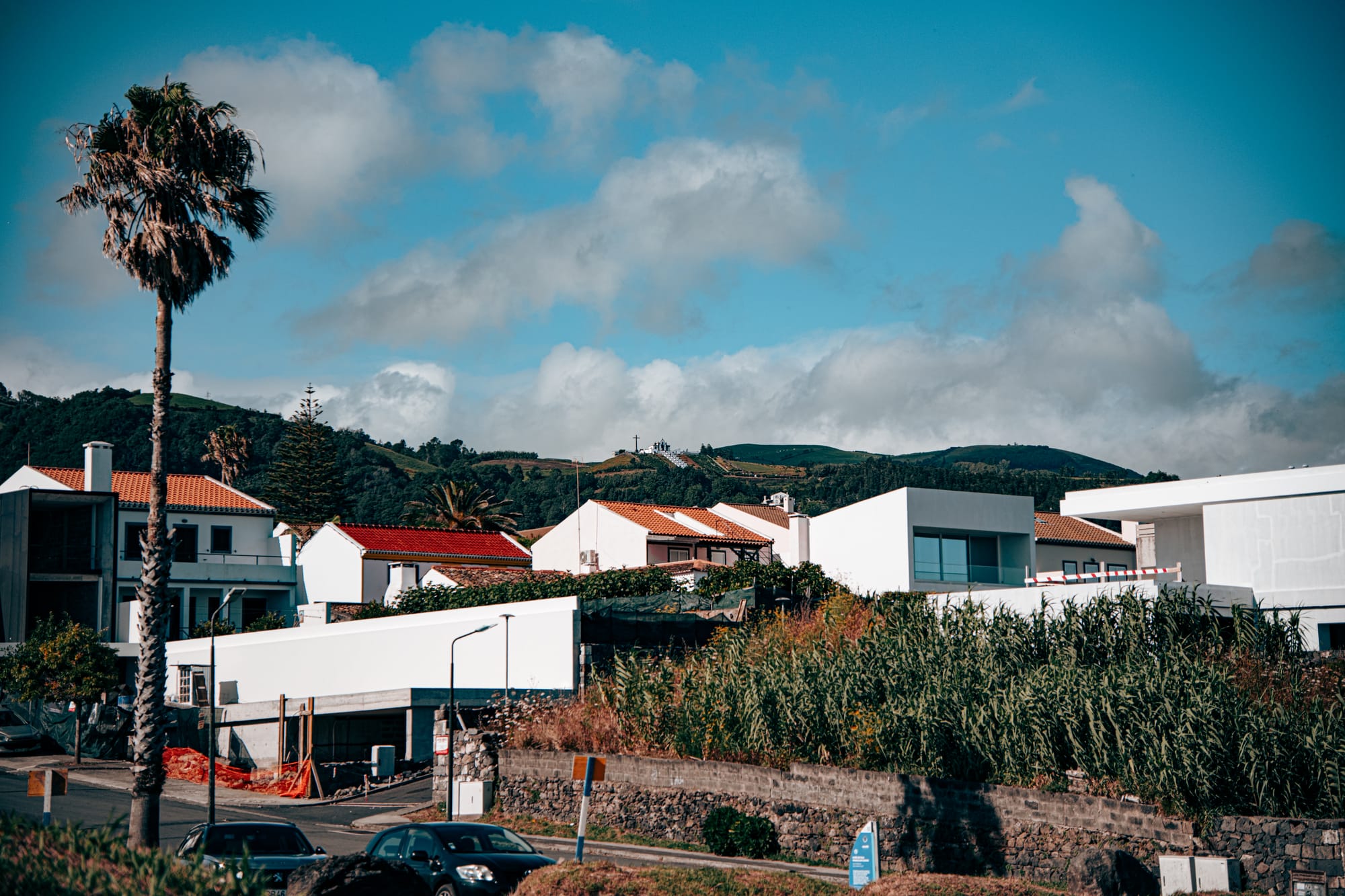
Viewing the church from Vila Franca do Campo, down below, highlights its profound elevation.
Architectural poise and material grace
From afar, the church appears luminous against the green and terracotta of its surroundings. Its façade is crisp, painted white and trimmed with basalt stone, a style common to the Azores. The contrast of light and dark materials draws your eye upward, culminating in a bell tower that seems to invite sound into the sky.
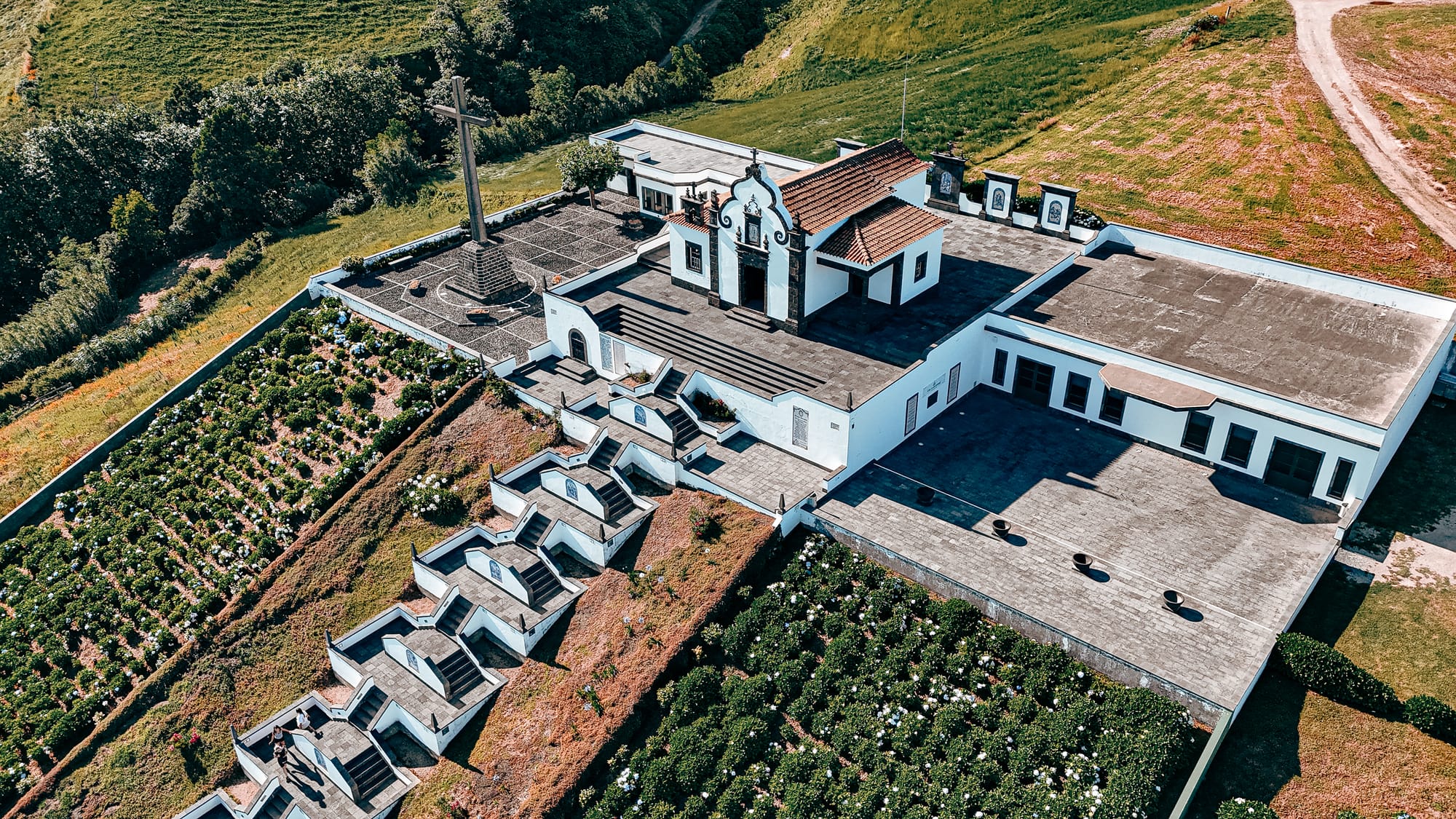
Though modest in size, the church holds its own through proportion and intention. The volcanic stonework speaks to the island's geologic past, while the decorative elements, including the cross-topped pinnacles and tiled portals, reflect the devotional aesthetics of the region. It is this tension between earth and elevation, simplicity and sanctity, that makes the site so visually resonant.
Vistas and perspectives
One of the church's defining experiences is the view it offers: a sweeping gaze over Vila Franca do Campo, the Atlantic Ocean, and the iconic Ilhéu de Vila Franca do Campo, a crater islet that has become one of the island's best-known landmarks. From this height, the town below flattens into a map of garden plots and red roofs, and the sea stretches into gradient blue.
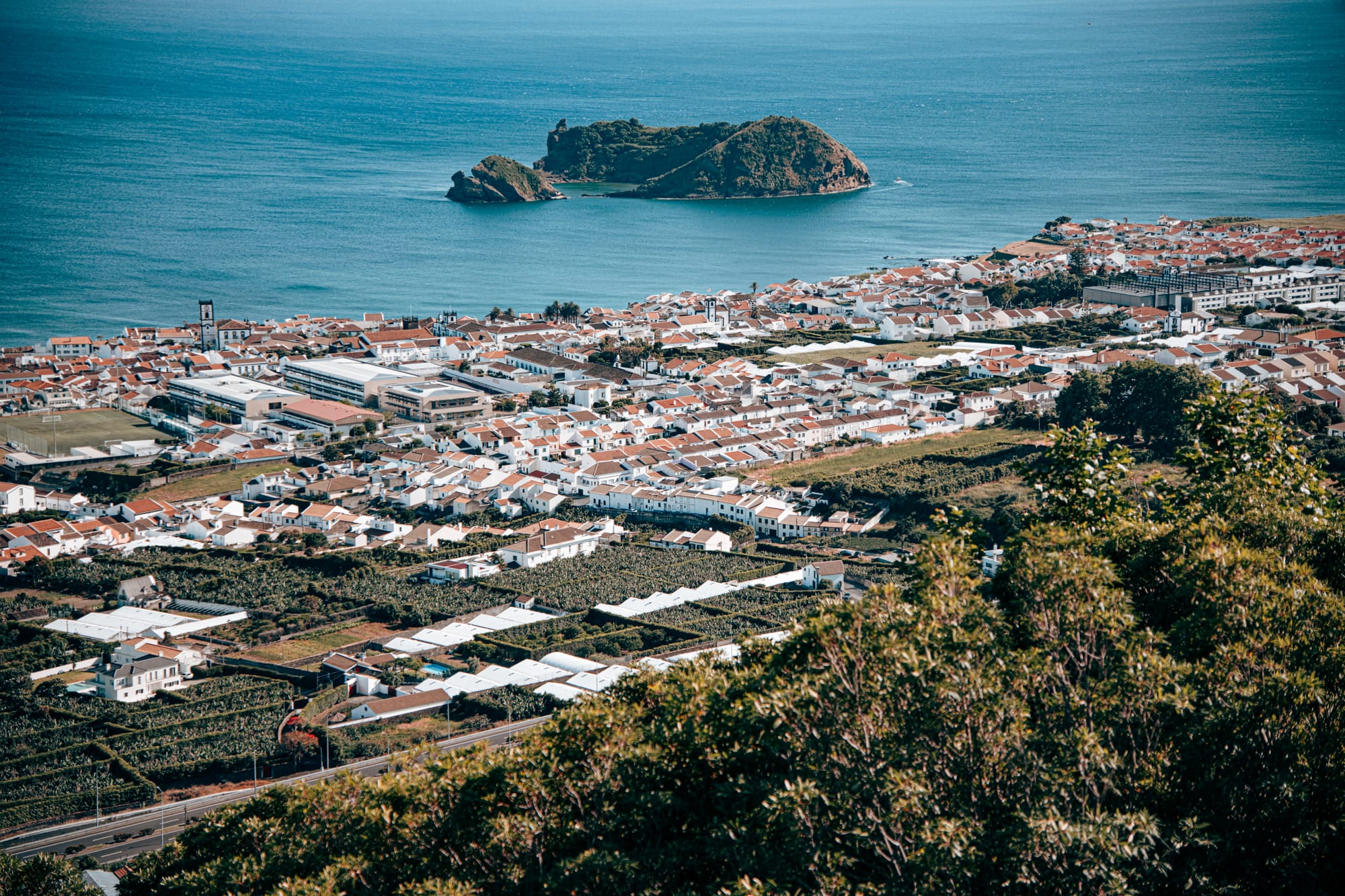
The best time to visit is early morning or late afternoon, when the light stretches long across the hillside and the air is thick with birdsong. On clear days, the view extends all the way to the southern curve of the island. On misty mornings, the clouds roll in over the fields like slow-moving tides, giving the sanctuary a spectral quality that only enhances its sense of seclusion and grace.
Living devotion
The church is not just a heritage site—it's alive with ritual. Locals still use the church for weddings, religious festivals, and personal prayer. It's also a point of pride for Vila Franca do Campo, whose residents maintain the site with visible care.
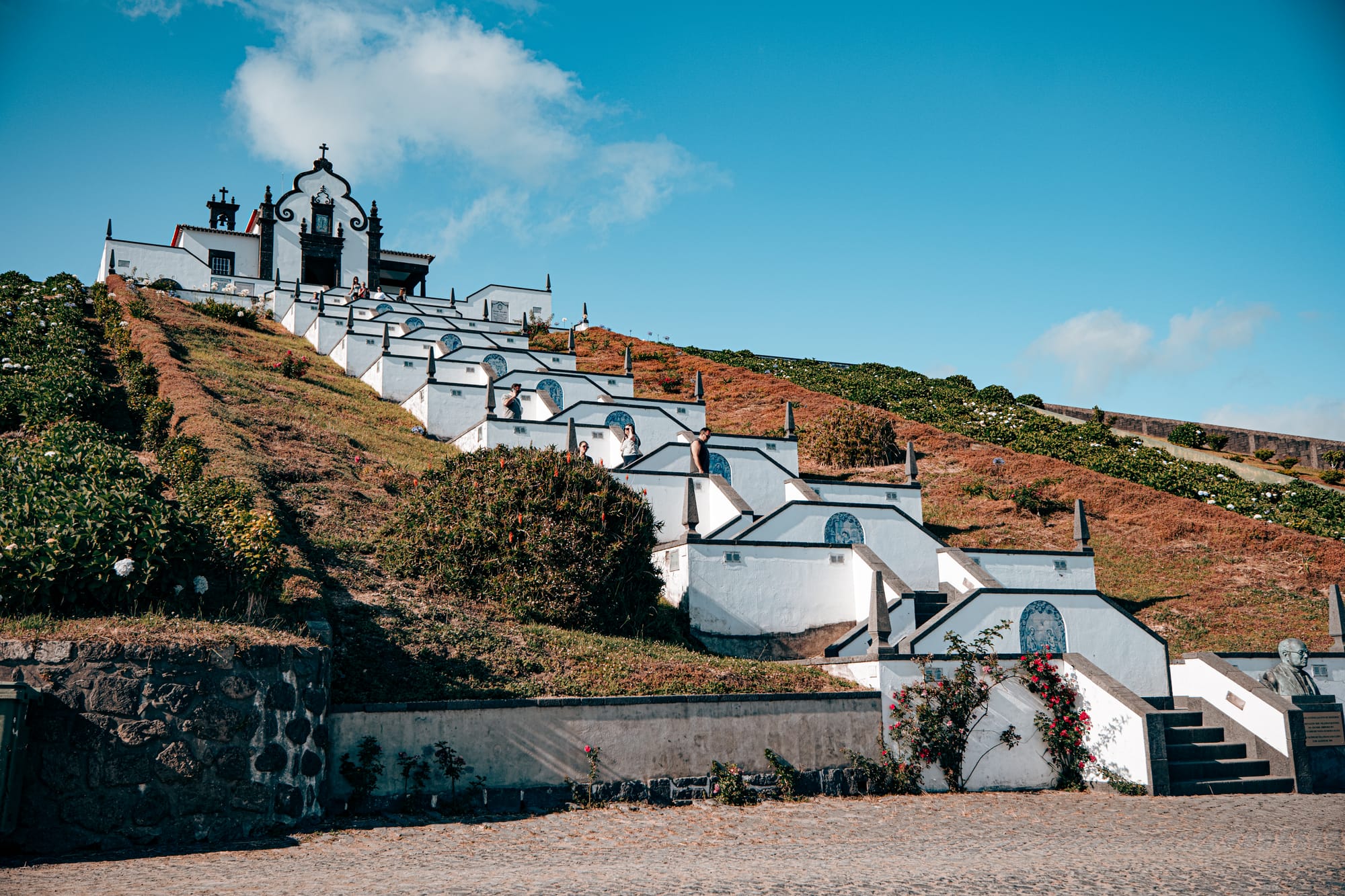
During the Feast of Nossa Senhora da Paz, the sanctuary becomes the heart of a communal celebration. Pilgrims climb the staircase barefoot, candles are lit at every landing, and the azulejos shimmer in the flickering light. It's a rare blend of solemnity and celebration, testament to the ways in which architecture, landscape, and belief can harmonize.
The azulejos: blue stories in stone
Azulejo tiles are a defining feature of Portuguese religious architecture, but the way they are used here feels particularly intimate. Each step tells a story, and taken together, they function as a visual catechism. These are not merely decorative panels but devotional stations. They offer a slow, contemplative rhythm to the climb.
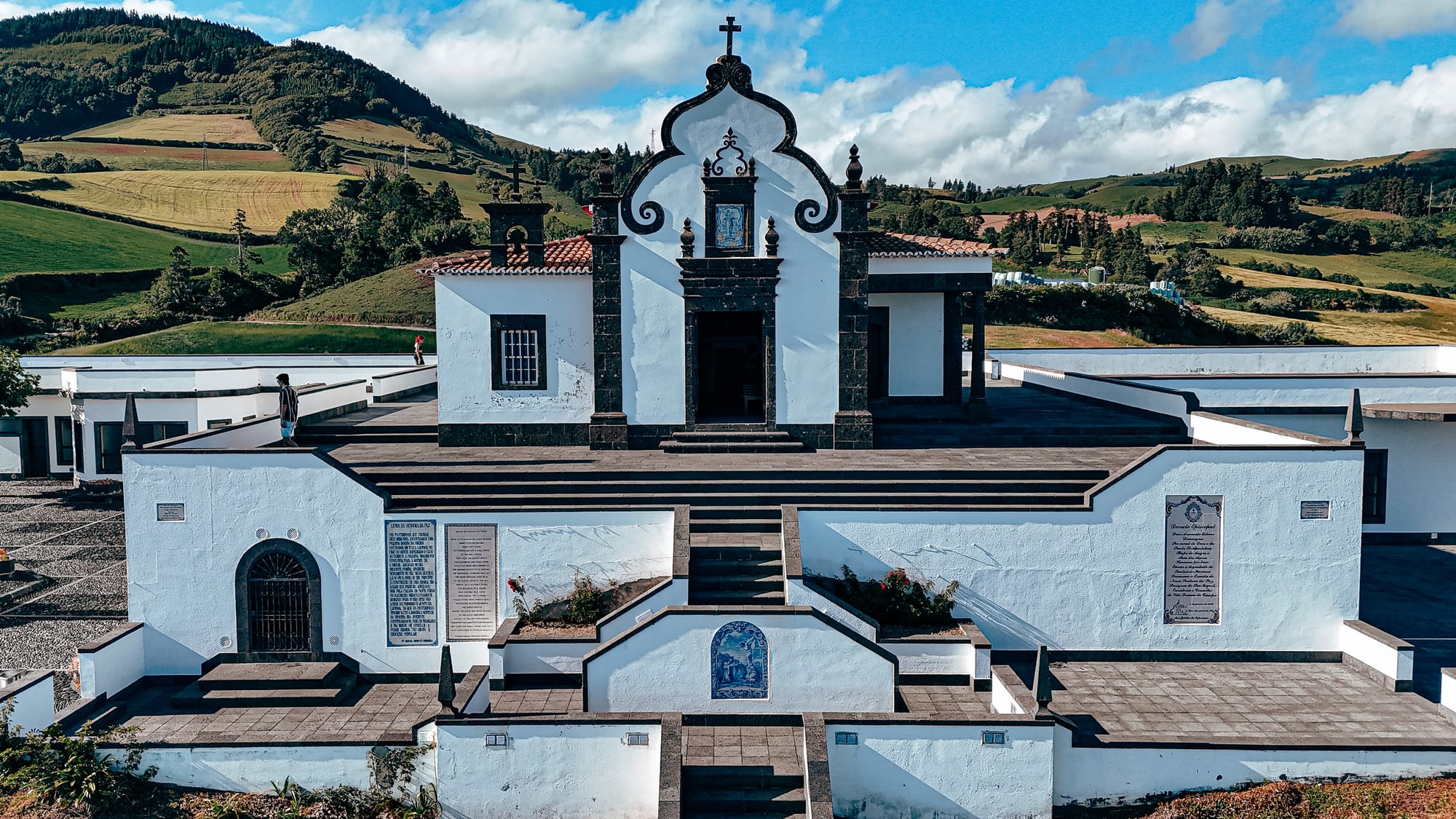
In our visit, we noticed that some of the tiles had been restored recently, while others showed signs of wear—their patina a reminder that this place is not a museum but a living threshold between generations.
Photography and presence
Photographers will find endless material here: formal symmetry, changing light, floral borders, and oceanic backdrops. Every step offers a new frame.
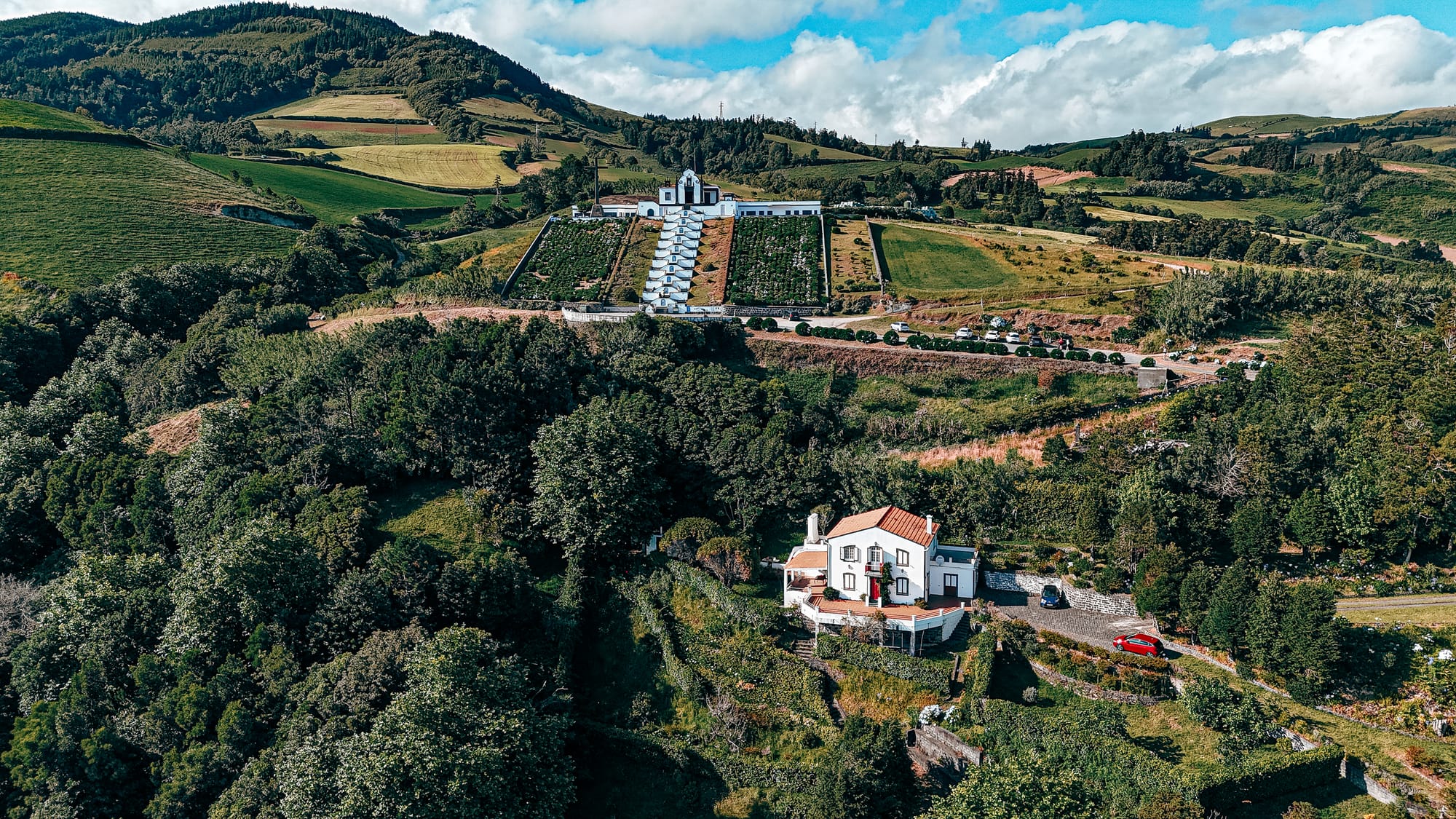
But more than that, the site invites stillness. We noticed many visitors pause halfway up the steps not just for breath, but for silence.
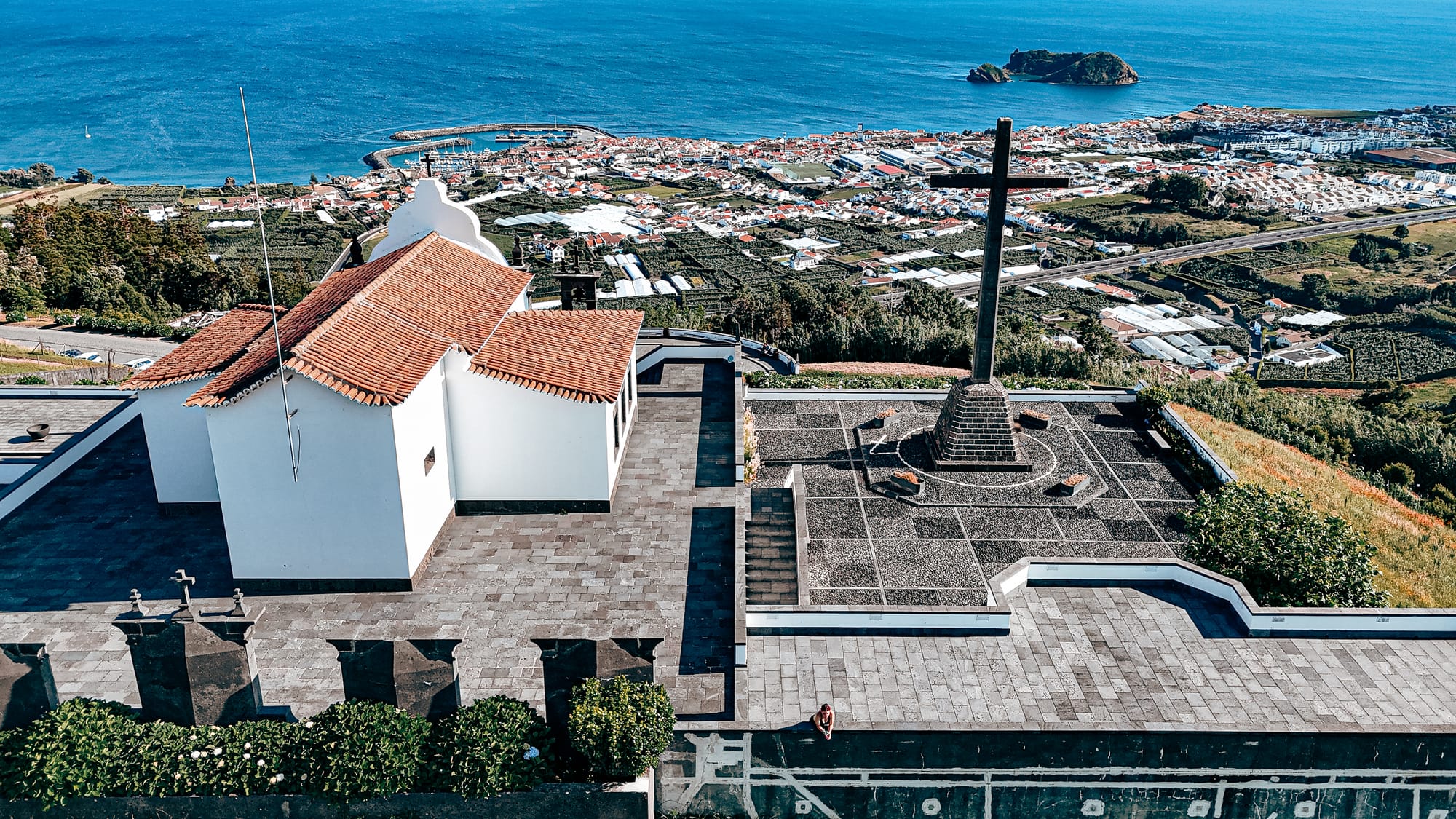
There's a humility to the church’s presence—it doesn’t dominate the landscape, but amplifies it.
A sacred ascent
The Santuário de Nossa Senhora da Paz may not be the largest or oldest church on São Miguel, but for us, it is unquestionably the most beautiful. Not because of opulence or grandeur, but because of how it holds its place in the world: grounded yet reaching, intimate yet expansive, earthly yet skybound.
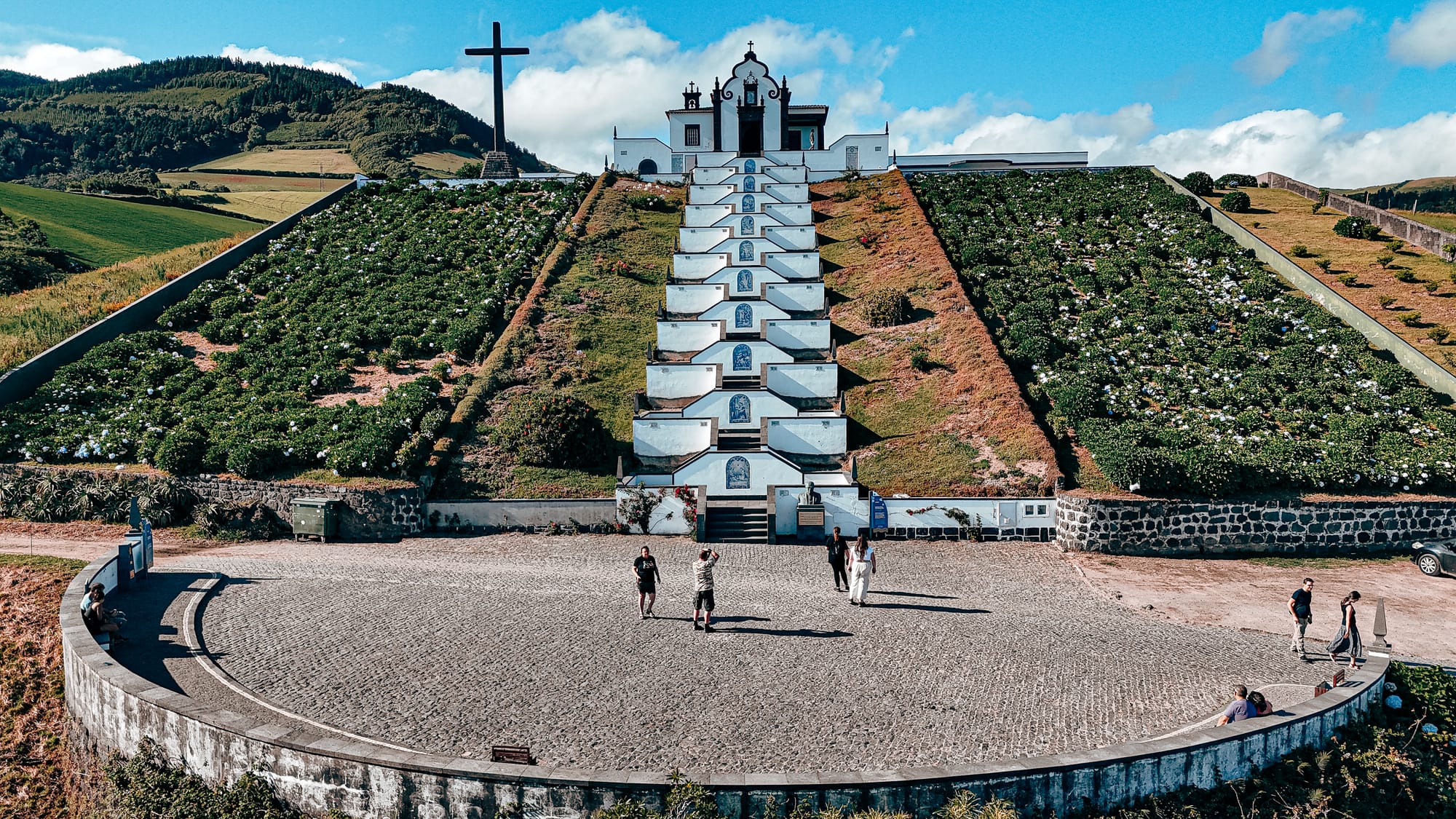
It is, in every sense, a sanctuary.






